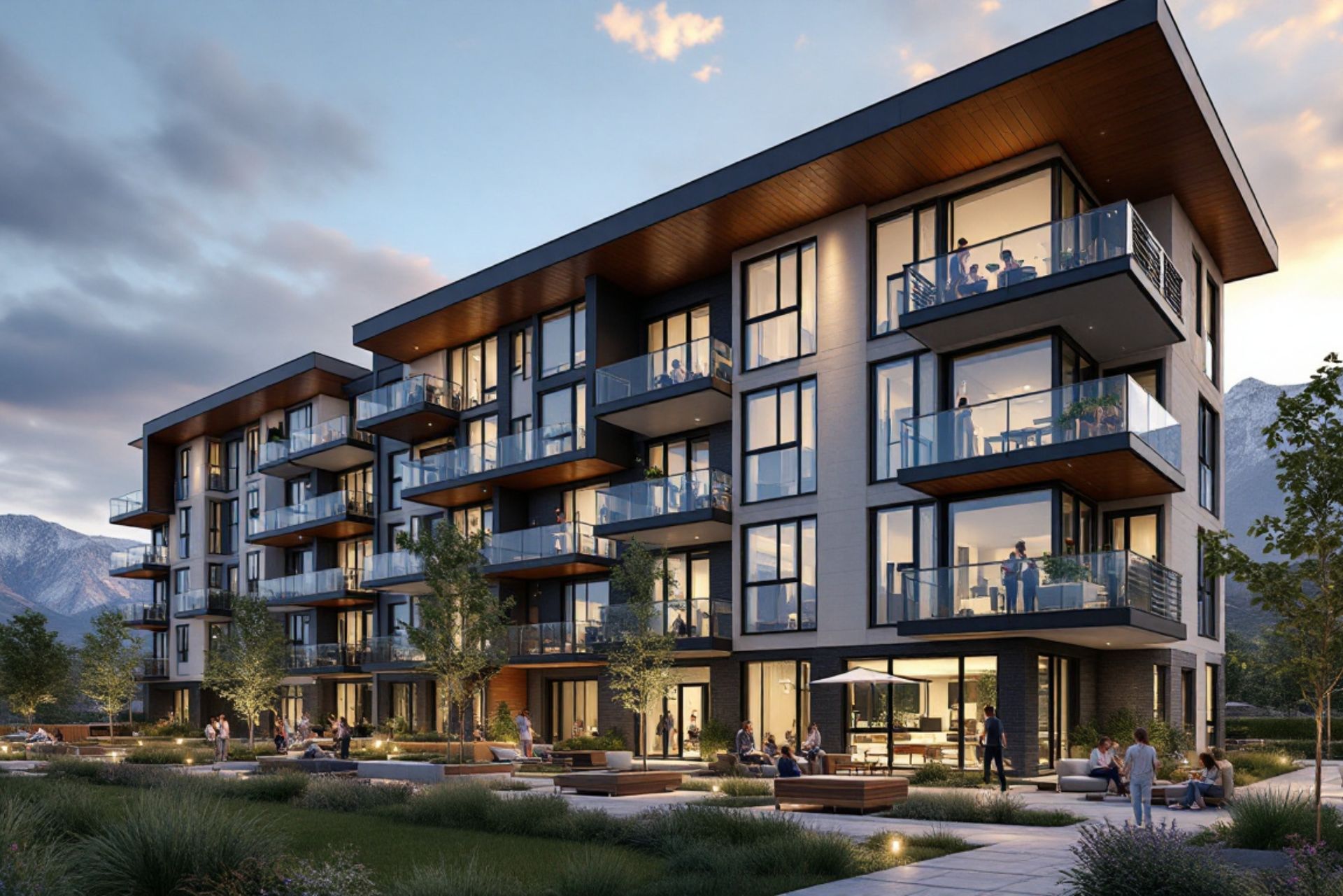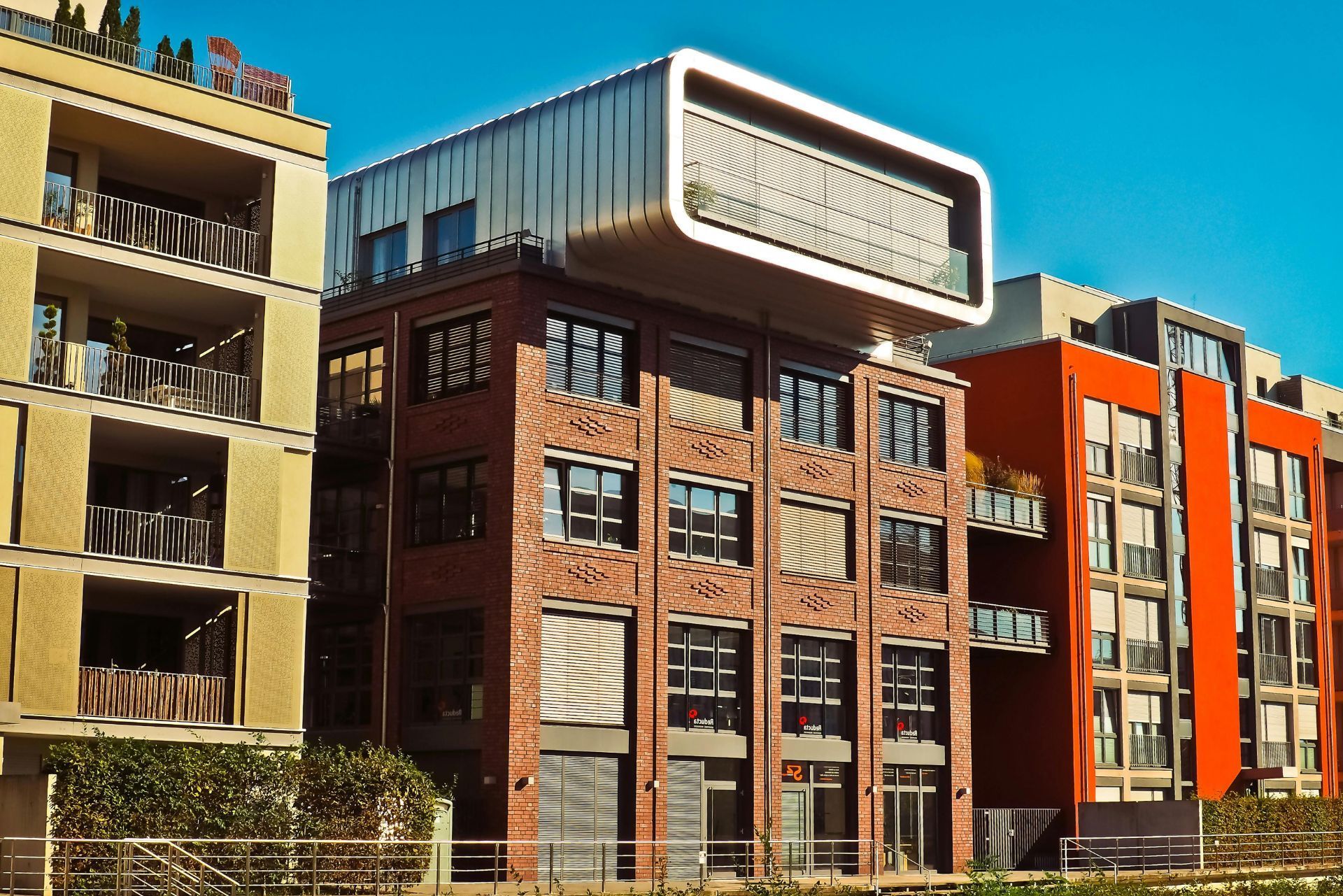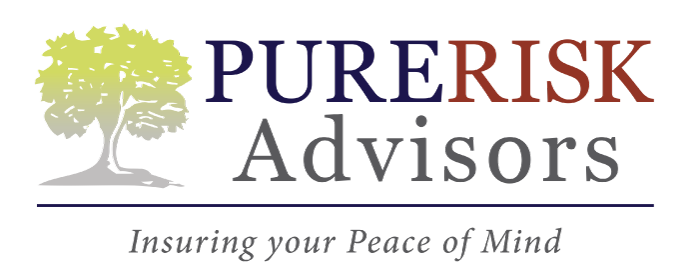Utah Condo Association Insurance
9:00am - 5:00pm Mon-Fri
We'll Reply in 15min*
Index
Contact Us
Phone
Location
Utah’s unique landscape and real estate market make condo living a popular choice for many residents. As a part of a condo community, understanding the ins and outs of condo association insurance is essential. This guide provides a thorough exploration of condo association insurance in Utah, outlining its importance, types of coverage available, and factors influencing costs.
Understanding Condo Association Insurance
Condo association insurance is a specialized type of insurance designed to protect both the residents of a condo community and the property itself. It typically covers a range of risks faced by the association as a whole and addresses potential liabilities that may arise within the community.
The Basics of Condo Association Insurance
At its core, condo association insurance provides coverage for the common areas and structures of a condominium. This includes hallways, pools, clubhouses, and exterior surfaces of the buildings. The policy is generally held by the homeowner’s association (HOA) and protects against damage, liability claims, and other associated risks.
The insurance coverage is divided into two primary categories: property and liability. The property aspect safeguards the buildings and shared amenities, while liability coverage protects the association from legal claims filed by residents or visitors injured on the premises.
Importance of Condo Association Insurance in Utah
The significance of condo association insurance in Utah cannot be overstated. With the state’s varying weather conditions and natural phenomena, risks such as fire, flood, and earthquake can pose serious threats to condo properties. A comprehensive insurance policy can help mitigate financial losses and protect the investment of the condo owners.
Furthermore, having proper insurance coverage instills a sense of security among residents. It ensures that the community is prepared for unforeseen circumstances, thereby enhancing the overall appeal of condo living in Utah. This peace of mind is particularly valuable in a state where outdoor activities and community engagement are prevalent, as residents can enjoy their surroundings without the constant worry of potential liabilities or damages.
Additionally, condo association insurance can play a crucial role in maintaining property values. When a community is well-insured, it signals to potential buyers that the association is proactive in managing risks and protecting their investments. This can lead to a more stable and attractive living environment, fostering a sense of community pride and encouraging residents to take an active role in the upkeep and governance of their shared spaces.

Types of Coverage in Condo Association Insurance
There are several types of coverage included in typical condo association insurance policies. Understanding these types allows homeowners associations to protect their assets and residents effectively.
Building Coverage
Building coverage is crucial as it protects the exterior of the condominium buildings, including walls, roofing, and foundations. This coverage typically extends to any structures that the condo association owns, such as fences and sheds. In case of damage from natural disasters, vandalism, or accidental incidents, building coverage provides the financial support necessary for repairs or rebuilds.
Moreover, this coverage can also encompass improvements made to the property, such as upgraded landscaping or newly installed amenities. By ensuring that these enhancements are included, condo associations can maintain the aesthetic appeal and value of their properties, which benefits all residents. Regular assessments and updates to the building coverage policy are essential to reflect any changes in property value or condition, thereby safeguarding the investment of the homeowners.
General Liability Coverage
General liability coverage offers protection against lawsuits and claims that arise from injuries or property damage occurring in common areas. For example, if a resident or visitor slips and falls in the pool area, general liability insurance would cover legal fees and medical bills.
This type of coverage is critical for protecting the financial health of the condo association and ensuring that the community can manage unexpected liabilities without burdening its members. Additionally, it can cover incidents related to events hosted by the association, such as community gatherings or holiday parties, where the risk of accidents may increase. By having a robust general liability policy, the association not only protects itself but also fosters a sense of security among residents, encouraging community engagement and participation.
Directors and Officers Liability Coverage
Directors and officers (D&O) liability coverage protects the HOA board members from claims that may arise from their decisions and management of the association. This coverage is particularly important as it encourages qualified individuals to serve on the board without fear of personal financial loss due to lawsuits.
Having D&O liability insurance is not just a protective measure; it also underscores the association’s commitment to good governance and transparency. It reassures residents that their board members are making informed decisions with their best interests in mind, which can enhance trust within the community. Furthermore, D&O coverage can also include protection against claims related to employment practices, such as wrongful termination or discrimination, thus promoting a fair and equitable environment within the association. This comprehensive approach to risk management is vital for fostering a positive community atmosphere and attracting dedicated individuals to leadership roles.
Factors Influencing Condo Association Insurance Cost
The cost of condo association insurance can vary significantly based on several factors. Understanding these elements can help associations manage their budgets effectively and seek adequate coverage.
Location and Age of the Building
The location of the condominium plays a vital role in determining insurance costs. Areas prone to natural disasters, such as flooding or earthquakes, will typically incur higher premiums. Additionally, older buildings may have higher insurance rates due to outdated construction materials or systems that are more susceptible to damage. For instance, a condo situated in a coastal region may face increased rates not only because of the risk of hurricanes but also due to the potential for erosion and saltwater corrosion affecting the structure over time. Conversely, newer buildings often incorporate modern safety features and materials designed to withstand various environmental threats, which can lead to more favorable insurance rates.
Number of Units
The number of units within the condo association also impacts insurance costs. Generally, a larger number of units can allow for a shared risk pool, potentially lowering individual premiums. However, if there are many units, it may also mean higher liability exposure, which could drive costs up. Additionally, associations with a higher density of units might face unique challenges, such as increased foot traffic and communal areas that require additional liability coverage. This is particularly true in urban settings, where the likelihood of accidents or incidents occurring in shared spaces, like lobbies or pools, is heightened. Therefore, associations must carefully assess their unit count in relation to their overall risk profile to ensure they have the right coverage in place.
Claims History
Past claims history is another critical factor influencing the insurance premium. A condo association with a history of frequent claims may face higher rates, as insurers view it as a greater risk. On the contrary, an association with few or no claims may benefit from lower premiums and favorable terms. Insurers often review the types of claims made, as well; for example, frequent water damage claims could indicate underlying plumbing issues that need addressing. Furthermore, associations that actively engage in risk management practices, such as regular maintenance checks and safety audits, may be able to demonstrate to insurers that they are taking proactive steps to mitigate risks, potentially leading to discounts on their premiums. This proactive approach not only helps in securing better insurance rates but also contributes to the overall safety and satisfaction of the residents within the community.

How to Choose the Right Condo Association Insurance
Choosing the right condo association insurance is a crucial step for any homeowner's association. Here are several key aspects to consider when making this decision.
Assessing Your Association's Needs
Before selecting an insurance provider, it’s essential to assess the specific needs of your association. This involves a thorough evaluation of the property, common areas, and potential risks unique to your community.
Engaging in discussions with residents can provide insight into their concerns and expectations, helping the HOA identify the necessary coverage types and limits. Additionally, consider conducting a risk assessment that takes into account factors such as the age of the buildings, the presence of amenities like pools or gyms, and the local climate, which can influence the likelihood of natural disasters. This comprehensive approach will ensure that the insurance policy aligns well with the community's unique characteristics and vulnerabilities.
Comparing Different Insurance Providers
It’s wise to shop around and compare different insurance providers. Gathering multiple quotes can help associations understand the available coverage options and associated costs. Look for insurers with expertise in condo association coverage, as they may offer tailored solutions that meet your community's needs.
Additionally, researching reviews and testimonials from other condo associations can provide valuable information about the reputation and reliability of an insurance company. Don’t hesitate to ask for references from other associations that have similar profiles; their experiences can shed light on the insurer's customer service and claims handling process. This information can be pivotal in making an informed decision and ensuring that your association is well-protected.
Understanding the Policy Terms and Conditions
Once potential policies have been identified, it is vital to thoroughly read and understand the terms and conditions. Pay close attention to exclusions, deductibles, and coverage limits. A clear grasp of the policy ensures that the condo association knows what is and isn’t covered, as well as any obligations they may have.
It may be beneficial to consult with an insurance agent or attorney to clarify any complex terms or legal jargon associated with the policy. Furthermore, consider discussing the policy with your board members to ensure that everyone is on the same page regarding the coverage and its implications for the association. Regularly reviewing the policy, especially during renewal periods or after significant changes in the community, can also help maintain adequate protection against evolving risks and liabilities.
Frequently Asked Questions about Utah Condo Association Insurance
Many condo owners have queries about insurance coverage and requirements. Here, we address some frequently asked questions to provide further clarity.
What Does Condo Association Insurance Typically Cover?
Condo association insurance typically covers the building structure, common areas, general liability, and D&O liability. Specific coverage may vary by policy, so it’s crucial to review your association's insurance agreement for detailed information. Additionally, many policies may also include coverage for loss of rental income, which can be particularly beneficial if the property is damaged and cannot be rented out. This aspect of coverage helps ensure that the association can maintain its financial stability during repairs and renovations.
Is Condo Association Insurance Mandatory in Utah?
While condo association insurance is not legally mandated in Utah, many condo associations see it as a necessity to protect their assets and residents effectively. In some cases, the association’s governing documents may require certain types of coverage. Furthermore, having a robust insurance policy can also enhance the marketability of the condos within the association, as potential buyers often look for properties with comprehensive insurance coverage to safeguard their investment.
How is the Insurance Cost Divided Among Condo Owners?
The cost of condo association insurance is generally divided among condo owners through monthly assessments. The HOA typically includes this cost in the association’s budget, ensuring all members contribute fairly to the necessary coverage. This method of cost-sharing not only promotes fairness but also fosters a sense of community responsibility, as each owner plays a part in the overall protection of their shared living environment.
Understanding how insurance costs are shared can improve transparency and trust within the community, making it easier for members to appreciate the need for adequate coverage. Moreover, some associations may offer educational sessions or distribute materials that explain the insurance process and costs, empowering owners to make informed decisions about their own insurance needs and the overall financial health of the association.
In addition to the financial aspects, it's important for condo owners to be aware of the risks associated with inadequate insurance coverage. Natural disasters, accidents, and other unforeseen events can lead to significant financial burdens if the association is not properly insured. By engaging in discussions about insurance and advocating for comprehensive coverage, condo owners can help ensure that their community remains resilient in the face of potential challenges.
REQUEST A QUOTE
Get a condo association insurance quote online today!
Condo Association Insurance
We will get back to you as soon as possible.
Please try again later.
Pure Risk Advisors
Addresses
Need Help?
Pure Risk Advisors is an independent insurance agency offering a comprehensive suite of insurance solutions to protect you from the unexpected.
Services
Business Hours
Monday | 9:00 AM - 5:00 PM
Tuesday | 9:00 AM - 5:00 PM
Wednesday | 9:00 AM - 5:00 PM
Thursday | 9:00 AM - 5:00 PM
Friday | 9:00 AM - 5:00 PM
Saturday | Closed
Sunday | Closed
All Rights Reserved | Pure Risk Advisors.


